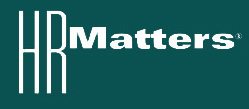Implement Self-Leadership Initiatives
A recent Talent Management.com article by Amy K. Hutchens suggests that teaching your employees to be inquisitive and how to build internal belief systems will make them more effective and increase cooperation and collaboration. Employees today must be able to rely more upon themselves for leadership. Talent management efforts should focus on developing employees’ self-leadership skills.
This whole idea of ‘self-leadership’ is a little unclear: there are generation gaps to consider; and leadership teams are unsure about how to manage the different age groups and the environment of this so-called ‘self-leadership’. Let’s take a look at how visual our world has become. What pops into your mind when you think of ‘an executive’? Leadership may have a similar visual attached to it. Does your mind offer a similar visual when prompted by ‘self-leadership’? Perhaps … and then again, maybe not.
Think internal and external, as in mental thoughts and physical actions. Mentally, self-leadership techniques involve self-examination and self-dialogue, questioning one’s beliefs and assumptions, and looking at one’s own thought patterns or habits. Physically, self-leadership involves self-observation, self-goal setting, management and if necessary modification of behavior, and discovering rewards in tasks performed.
The original article shares a great example of what worked for one hypothetical business man, and you can click here to read that example. There are five techniques of self-leadership you can teach your employees. First and foremost, is inquiry. Teach your employees to ask themselves better questions. Go beyond the obvious question and see where you can do better. Have them create a list of questions about the initial issue and then choose the top three to five to help focus on the real issue. And two words to absolutely avoid when creating a goal: “I want” – – change that immediately to “How will” or “How might”. Don’t make statements, instead make questions to get the ball rolling on taking action.
Secondly, there’s truth. Logic won’t change a belief, only a new belief will change an old belief. As a talent manager, it’s important to know what truths, beliefs and assumptions impact personal behavior and decisions. Do your beliefs help or undermine your reputation as a leader?
Following truth is energy – “energy, not time, is the fundamental currency for high performance”, and you should know force, quantity, quality and focus of your employees’ energy levels. Quantity refers to their physical stamina and endurance. Being mentally agile is the focus, having passion and purpose is the force. Having high energy can make your employees more productive and focused. In the long run, it’s important to remember that energy makes time more valuable. How can you increase this resource?
4. Align: A misalignment between ethics and moral perspective with colleagues and company can make a leader feel like he or she is rowing across a lake of molasses, whereas ensuring that alignment can help all involved row in the same direction, faster.
5. Action: Knowledge usually equals power, but there are a lot of people who know things, have creative ideas and never act on them. Knowledge plus action equals results.
Taking the time to create self-leadership initiatives will yield higher retention rates, top-performers and efficiencies. Interpersonal conflict can also be reduced with effective self-leadership programs because this idea is about the greater good, not self-gratification. Helping employees find their personal identities and role of contribution for the organization is another perk of self-leadership. Not only will you be contributing to each employee’s personal impact and satisfaction within the organization, but job satisfaction, performance and company culture improves as well.
Encouraging self-leadership within your employee pool helps the individual, the organization and the bottom line. Not to mention … when someone is effective at leading themselves, they’ll eventually be better at leading others. To read more about how to encourage and implement self-leadership strategies within your organization, click here to read the full article.
